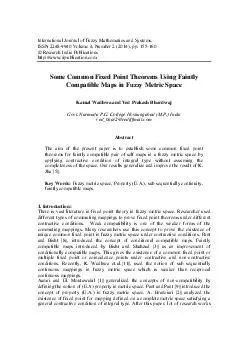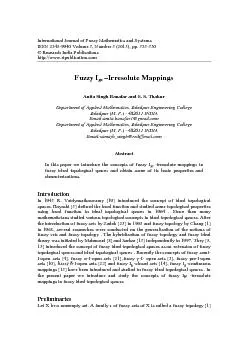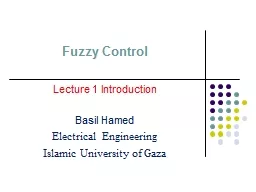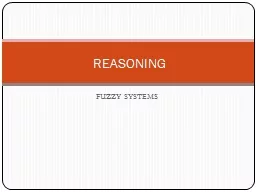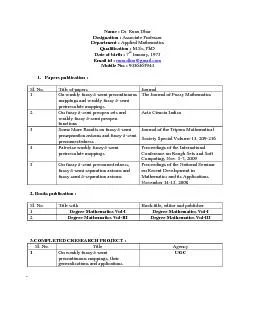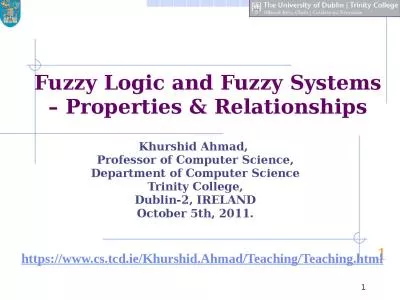PDF-International Journal of Fuzzy Mathematics and Systems
Author : alida-meadow | Published Date : 2015-06-16
155 160 Research India Publications httpwwwripublicationcom Some Common Fixed Point Theorems Using Faintly Compatible Maps in Fuzzy Metric Space Kamal Wadhwa and
Presentation Embed Code
Download Presentation
Download Presentation The PPT/PDF document "International Journal of Fuzzy Mathemati..." is the property of its rightful owner. Permission is granted to download and print the materials on this website for personal, non-commercial use only, and to display it on your personal computer provided you do not modify the materials and that you retain all copyright notices contained in the materials. By downloading content from our website, you accept the terms of this agreement.
International Journal of Fuzzy Mathematics and Systems: Transcript
Download Rules Of Document
"International Journal of Fuzzy Mathematics and Systems"The content belongs to its owner. You may download and print it for personal use, without modification, and keep all copyright notices. By downloading, you agree to these terms.
Related Documents

